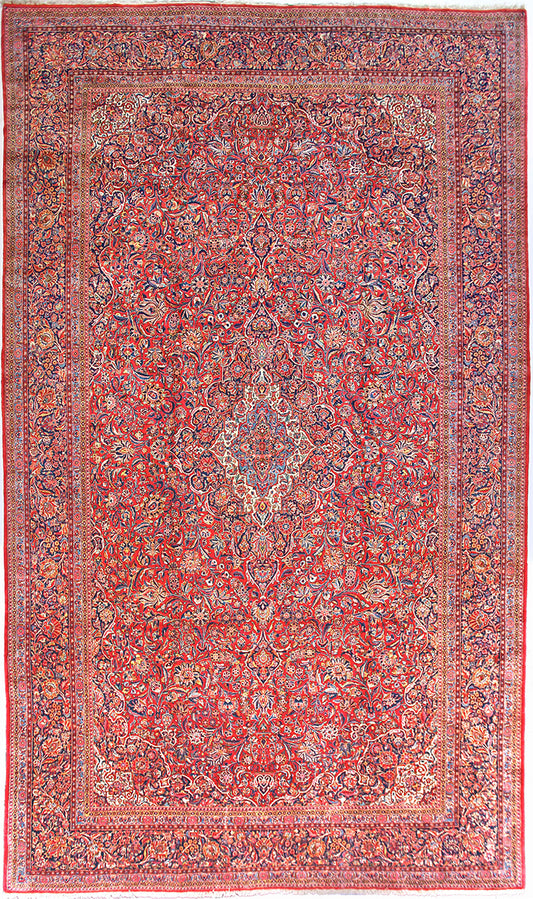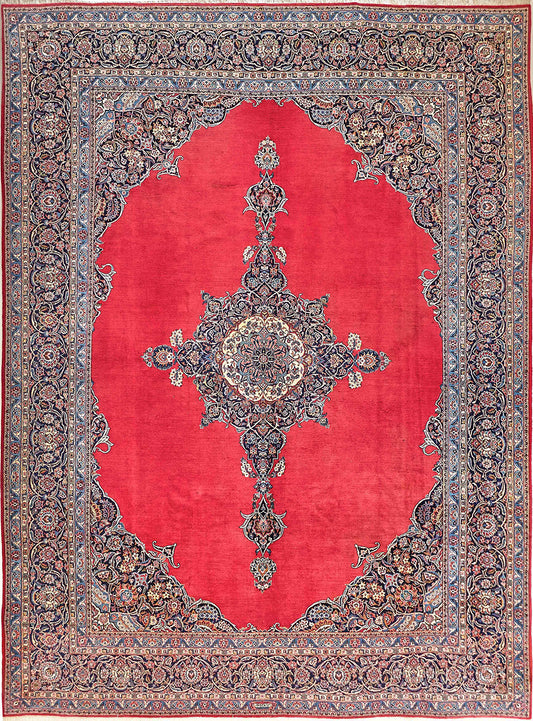Qazvin Rug History & Origin Guide
Discover the Timeless Beauty of Qazvin Rugs: A Comprehensive Guide
Welcome to a captivating journey into the world of Qazvin rugs, where centuries-old traditions and exquisite craftsmanship intertwine. Located in Iran, Qazvin has been renowned for producing magnificent handmade rugs that have graced the homes of discerning individuals across the globe. In this comprehensive guide, we will delve into the rich history, intricate designs, vibrant colours, and remarkable weaving techniques that make Qazvin rugs a true treasure. Immerse yourself in the allure of these magnificent works of art and embrace their cultural heritage.
History of Qazvin
Nestled in the picturesque foothills of the Alborz Mountains, Qazvin boasts a storied history that dates back to ancient times. It was once a flourishing capital during the Safavid dynasty (1501-1722) and served as a strategic hub on the Silk Road. Qazvin's geographical significance and close proximity to influential empires, such as the Parthians, Sassanids, and Mongols, greatly influenced the city's cultural tapestry.
History of Qazvin Rugs
Qazvin has been a prominent centre for rug weaving for centuries. The art of rug making flourished under various rulers, including the Safavids and the Qajars, who nurtured the craft and created an environment conducive to artistic expression. Qazvin rugs have been coveted for their exceptional quality and timeless appeal, reflecting the aesthetics and influences of different dynasties throughout history.
Types of Designs
Qazvin rugs encompass a diverse array of captivating designs, each telling a unique story. The most renowned designs include the medallion, all-over floral, and pictorial motifs. These designs often feature intricate geometric patterns, floral elements, and symbolic representations, reflecting the cultural heritage and artistic sensibilities of the region.
Colours Used in the Rugs
Qazvin rugs are renowned for their harmonious and vibrant colour palettes. Traditional colour combinations include rich reds, deep blues, earthy browns, and golden yellows. These colours are derived from natural dyes sourced from plants, minerals, and insects, ensuring an authentic and enduring beauty.
Materials Used
Qazvin rugs are meticulously crafted using the finest natural materials. The primary material used is wool, prized for its durability, softness, and ability to retain vibrant colours. Silk accents are often incorporated to add a luxurious touch and enhance the intricate details of the designs.
Knotting Details (KPSI)
The knotting technique used in Qazvin rugs is predominantly the Persian knot, also known as the asymmetrical or Senneh knot. Skilled artisans meticulously tie each knot by hand, ensuring exceptional precision and durability. The knot density is measured by KPSI (knots per square inch) and serves as an indicator of the rug's intricacy and quality. Qazvin rugs often boast high knot counts, ranging from 150 to 300 KPSI, resulting in finely detailed and luxurious rugs.
Motifs and Patterns
Qazvin rugs feature a plethora of captivating motifs and patterns, each with its own symbolic significance. Floral motifs, such as roses, tulips, and palmettes, represent beauty and life. Geometric patterns, including medallions, stars, and interconnected shapes, symbolise balance and harmony. Animal motifs, such as birds or mythical creatures, signify protection and good fortune. These motifs are meticulously woven into the rugs, creating mesmerizing patterns that add depth and character to any space.
Famous Weavers or Workshops from the Area
Qazvin is home to several renowned rug weaving workshops, where master weavers dedicate their lives to perfecting their craft. While individual weavers may not be widely known, these workshops have gained recognition for their commitment to preserving traditional techniques and producing exceptional Qazvin rugs. The workshops serve as centres of excellence and ensure that the legacy of Qazvin rug weaving continues to flourish.
Demographics and Information about the Area
Qazvin is a vibrant city located in north-western Iran. It is the capital of Qazvin Province and has a population of approximately 400,000 residents. Situated at an altitude of 1,800 meters above sea level, Qazvin enjoys a mild climate with cool summers and cold winters. The city's strategic location on major transportation routes has contributed to its historical and cultural significance.
Nearby Rug-Producing Areas
In close proximity to Qazvin, you'll find other renowned rug-producing regions in Iran. These include cities like Tabriz, Isfahan, and Kashan, each with its own distinct rug weaving traditions, designs, and characteristics. Exploring the neighbouring rug-producing areas will provide a comprehensive understanding of the diverse Iranian rug heritage.
Climate and Weather
Qazvin experiences a moderate continental climate. Summers are mild with temperatures averaging around 25°C (77°F), while winters can be cold with temperatures dropping to around 0°C (32°F). The region receives a moderate amount of rainfall, particularly during the winter months. Spring and autumn offer pleasant weather, making them ideal times to explore the city and its surrounding areas.
Best Time to Visit
If you plan to visit Qazvin, the best time to go is during the spring (April to June) and autumn (September to November) seasons. The weather during these periods is pleasant, allowing you to explore the city comfortably. Additionally, these seasons offer the opportunity to witness the beauty of nature as flowers bloom or leaves change colour, adding a touch of enchantment to your visit.
Top Tourist Destinations
Qazvin is home to numerous historical and cultural attractions that are worth exploring. Some of the top tourist destinations in the area include:
- The Chehel Sotoun Palace: A stunning Safavid-era palace known for its beautiful architecture and scenic gardens.
- The Jameh Mosque of Qazvin: A grand mosque showcasing intricate tilework and impressive architectural features.
- Alamut Castle: A historic fortress located in the Alamut Valley, offering panoramic views and a glimpse into medieval times.
- Aminiha Hosseiniyeh: A religious complex featuring intricate woodwork and stunning Persian architecture.
Cultural or Artistic Events in the Region
Qazvin hosts various cultural and artistic events throughout the year, showcasing the region's rich heritage. From traditional music and dance performances to art exhibitions and craft fairs, there are numerous opportunities to immerse yourself in the vibrant cultural scene of Qazvin. Stay tuned to the local event calendars to make the most of your visit and engage with the artistic spirit of the city.
Any Other Pertinent Details Specific to the Location
In addition to its rich rug weaving heritage, Qazvin is known for its traditional handicrafts, including pottery, metalwork, and calligraphy. Exploring the local markets and bazaars provides a chance to witness the skilled artisans at work and acquire unique pieces that reflect the cultural richness of the region. Don't miss the opportunity to indulge in traditional Iranian cuisine, which is renowned for its aromatic flavours and delightful culinary traditions.
Explore Our Collection of Qazvin Rugs
Immerse yourself in the world of Qazvin rugs and discover the perfect piece to elevate your home's aesthetics. Our curated collection showcases the finest Qazvin rugs, meticulously handcrafted by skilled artisans who have inherited generations of weaving traditions. Each rug tells a story of heritage and artistry, bringing warmth, beauty, and cultural richness to your living space. Browse our collection today and find the perfect Qazvin rug to add a touch of elegance and sophistication to your home.
Browse our collection of Qazvin rugs now and embark on a journey of timeless beauty and exceptional craftsmanship. Let the allure of these exquisite rugs transform your home into a sanctuary of art and culture.
Browse Our Current Selection of Qazvin Rugs
-
Persian Qazvin Rug
Regular price £21,120.00Regular priceUnit price per -
Persian Qazvin Rug
Regular price £9,120.00Regular priceUnit price per


